Key takeaways
- Vegan carrot cake replaces traditional ingredients with plant-based alternatives, offering a moist and flavorful dessert while being kind to animals and the environment.
- Key ingredients include fresh grated carrots, flaxseed or chia seeds as egg substitutes, and aromatic spices to achieve the classic flavor.
- Vegan baking promotes creativity and can be gentler on digestion, aligning food choices with personal values.
- Essential tools include quality mixing bowls and loaf pans, while tips for success involve careful mixing, using fresh ingredients, and allowing batter to rest before baking.
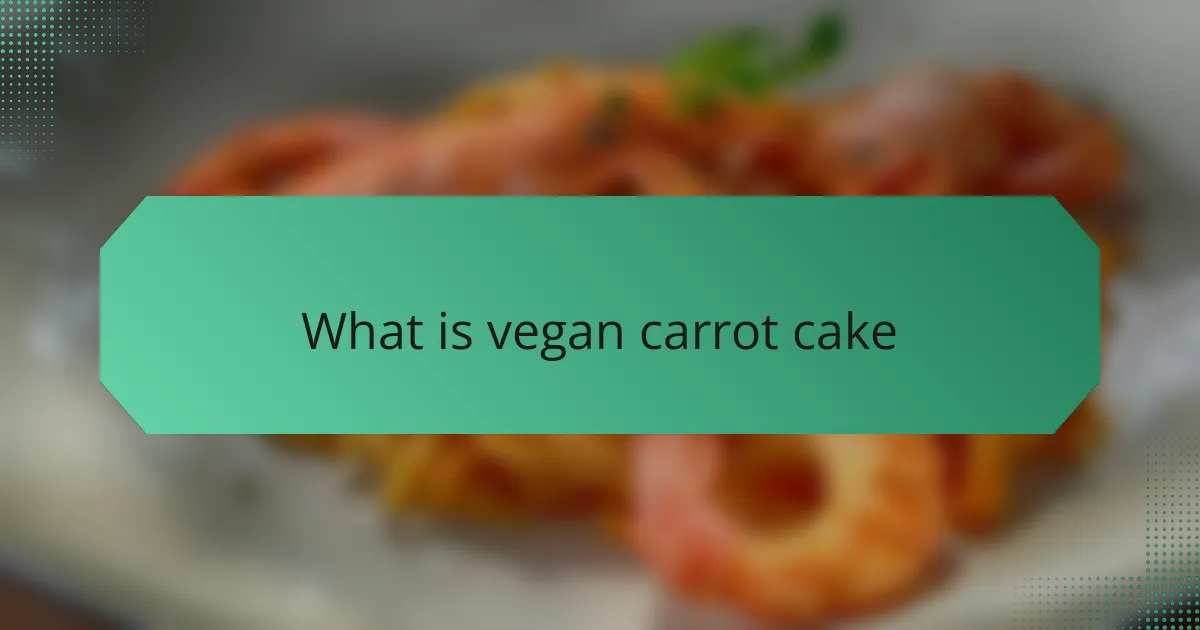
What is vegan carrot cake
Vegan carrot cake is essentially a plant-based twist on the classic dessert, replacing traditional ingredients like eggs, butter, and dairy with cruelty-free alternatives. When I first tried baking one, I was surprised at how moist and flavorful it could be without any animal products. Have you ever wondered if a vegan cake could capture the same comforting warmth and spice as the traditional version? I found that it really can—sometimes even better, with the added bonus of being kind to animals and the planet.
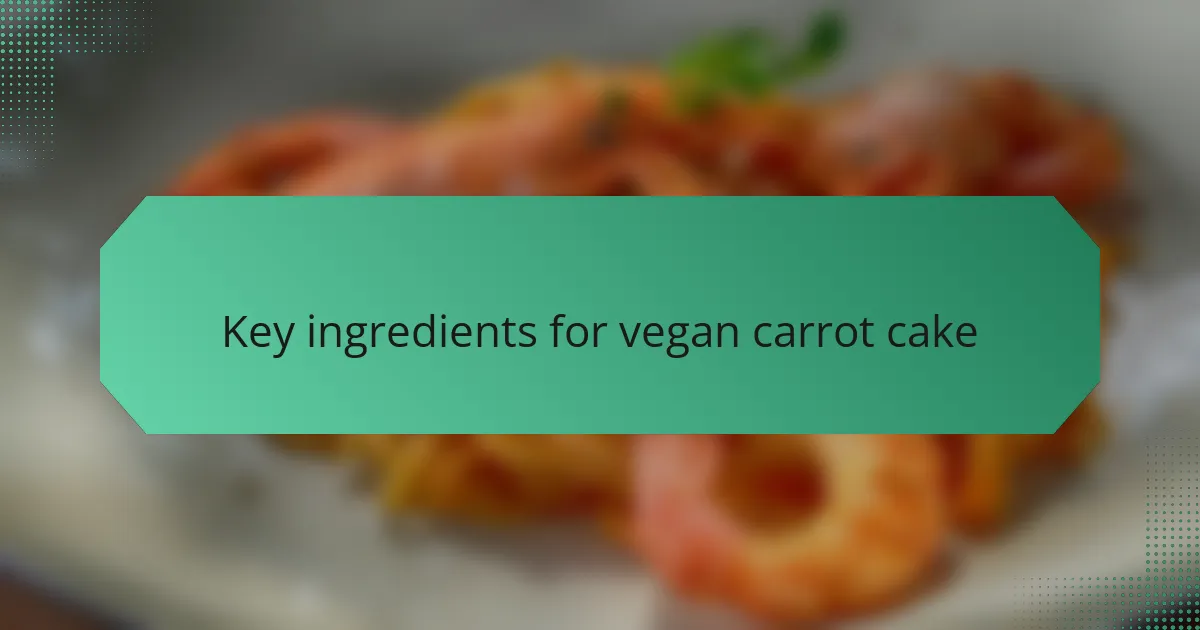
Key ingredients for vegan carrot cake
The heart of any great vegan carrot cake lies in choosing the right ingredients. For me, the magic starts with fresh grated carrots—they bring natural sweetness and moisture that no artificial substitute can match. Have you noticed how those tiny shreds actually keep the cake tender and give it that classic texture we all love?
Replacing eggs is always a hurdle in vegan baking, but I’ve found flaxseeds or chia seeds soaked in water do the trick perfectly. They bind the batter just like eggs, without any weird aftertaste. It’s amazing how something so simple can transform a recipe and still feel wholesome and satisfying.
Of course, the spices—cinnamon, nutmeg, and ginger—are non-negotiable for that warm, comforting flavor. In my experience, using fresh, aromatic spices makes all the difference; it’s like the cake tells a story with every bite. Isn’t it wonderful when a plant-based dessert feels just as cozy and rich as the one you grew up with?
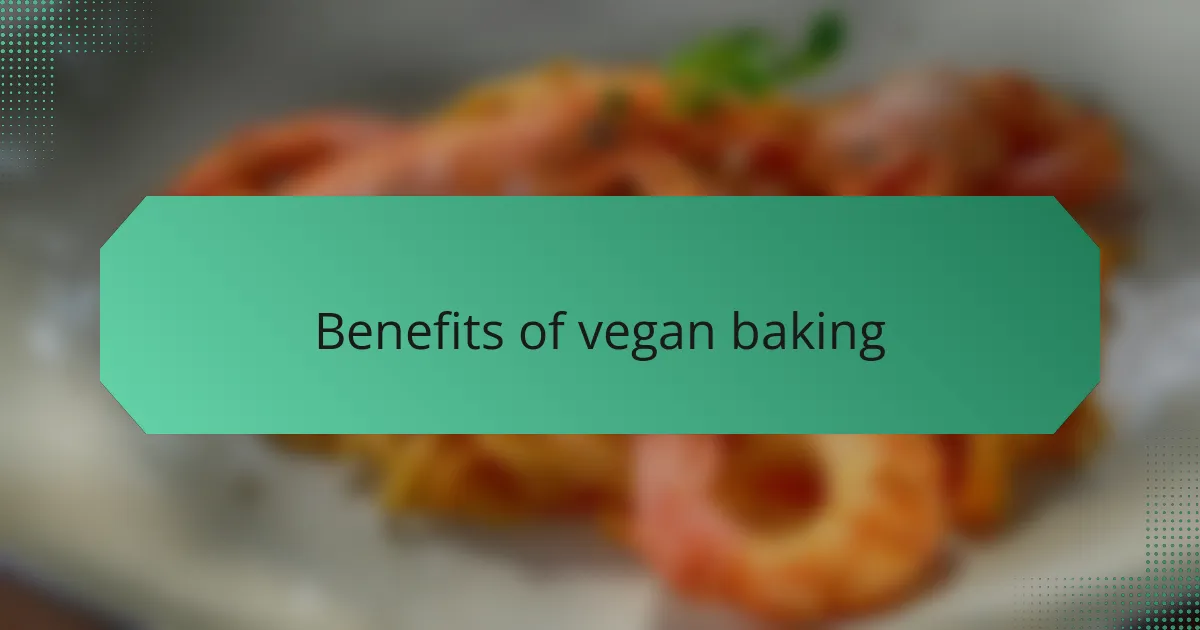
Benefits of vegan baking
One thing I truly appreciate about vegan baking is how it encourages creativity. Without relying on eggs or dairy, I’ve had to experiment with ingredients like applesauce or coconut oil, which not only add moisture but introduce new layers of flavor. Have you ever thought about how that challenge actually sparks innovation in the kitchen?
Beyond taste, vegan baking also feels like a kinder choice. Knowing that no animals were harmed gives me a quiet satisfaction with every slice I serve. It’s not just about food; it’s about aligning my values with what I eat, and that connection makes the baking process even more fulfilling.
I’ve also noticed how vegan baked goods tend to be gentler on digestion. Using plant-based fats and natural sweeteners often means fewer tummy troubles after indulging. Doesn’t it feel good when treats are not only delicious but also easier on your body? For me, that lightness is a huge part of why I keep coming back to vegan recipes.
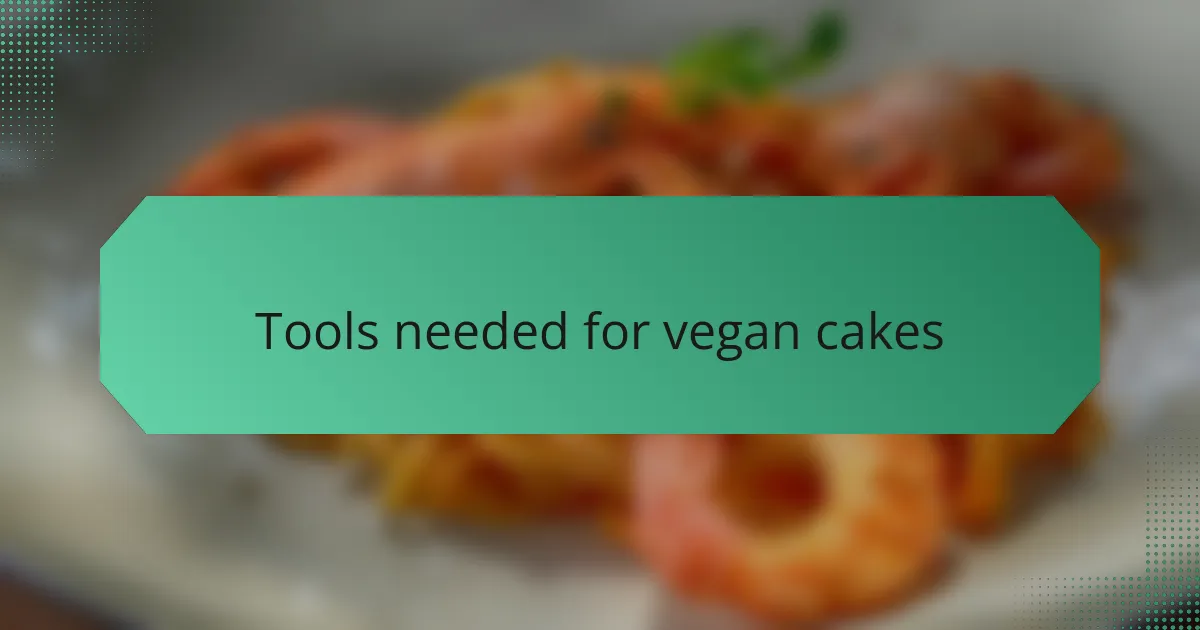
Tools needed for vegan cakes
Having the right tools in the kitchen makes all the difference when baking vegan cakes. For example, I always reach for a good-quality mixing bowl and a sturdy whisk because blending plant-based ingredients requires a bit more patience to get the perfect consistency.
One tool I can’t live without is my silicone spatula. It scrapes the bowl so well, making sure nothing goes to waste—plus, I love how it’s gentle on delicate batters that rely on natural binders like flax eggs. Have you ever noticed how a simple tool like that can save you from a messy countertop and a disappointed cake?
And then there’s the trusty loaf pan or round cake tin. In my experience, using the right-sized pan prevents uneven cooking, which is especially important since vegan batters can behave differently than traditional ones. Investing in quality pans really pays off when you want that perfect crumb and shape every time.
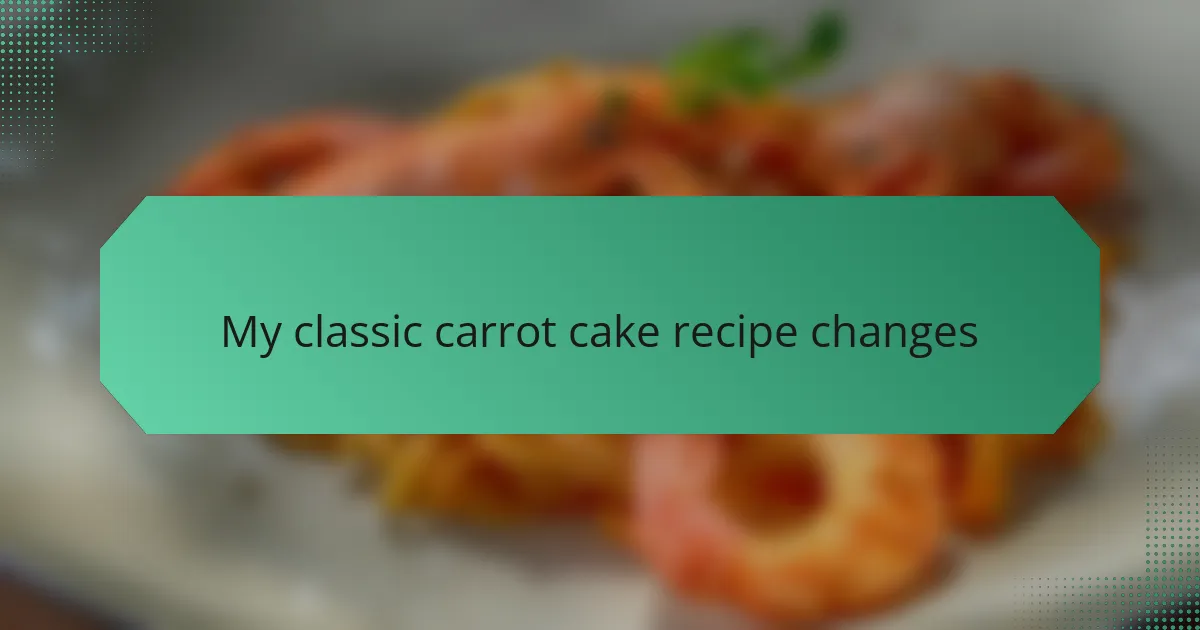
My classic carrot cake recipe changes
When I first decided to revamp my classic carrot cake recipe, I knew the egg replacements would be the biggest challenge. I swapped traditional eggs for a flaxseed-water mixture, and honestly, that simple switch amazed me—my cake stayed just as moist and tender without any hint of graininess. Have you ever been surprised how such a tiny change can completely transform the texture of a familiar recipe?
Another change I embraced was swapping out refined sugar for coconut sugar. It gave the cake a subtle caramel note that felt warmer and more complex to my palate. At first, I worried this might overpower the classic spices, but it actually enhanced the cinnamon and nutmeg, rounding out every bite with a new depth. Don’t you love when tweaking ingredients opens up fresh flavor possibilities?
Lastly, I replaced some of the oil with unsweetened applesauce to cut down on fat while keeping the cake moist. It was a small change that made the cake feel lighter without sacrificing that comforting, home-baked richness I crave. I wonder, have you ever tried a healthier twist on a beloved dessert and been pleasantly surprised by how delicious it still is? For me, these changes made the classic carrot cake feel fresh and even more enjoyable.
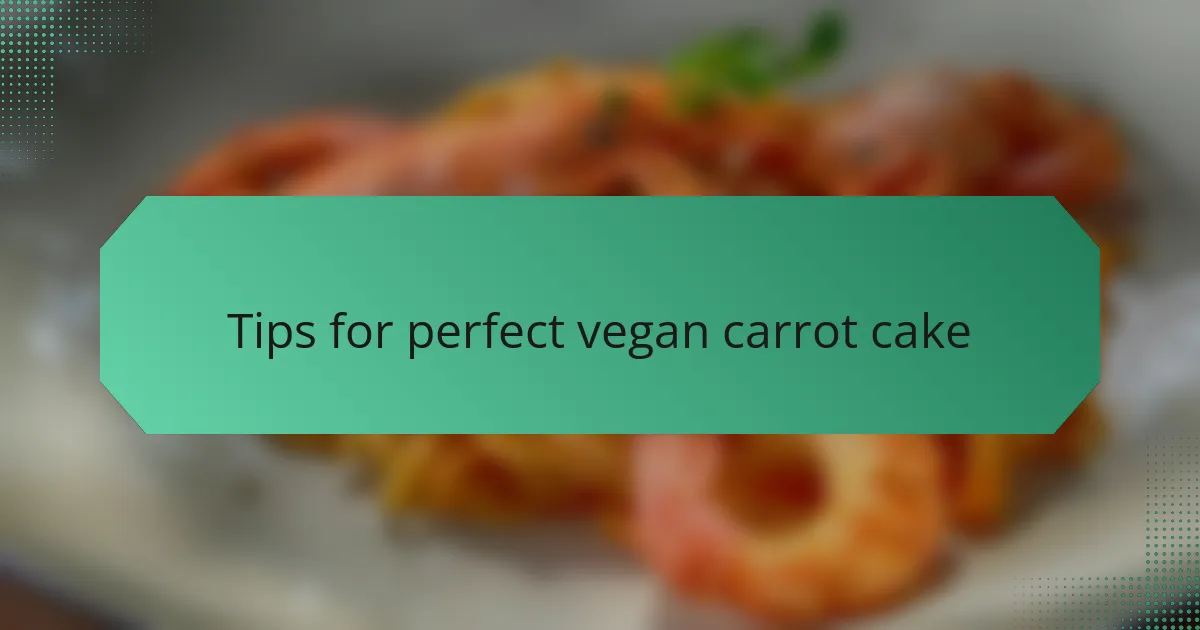
Tips for perfect vegan carrot cake
One tip I’ve learned from experience is not to overmix the batter. It’s tempting to get everything perfectly combined, but stirring too much can make the cake dense rather than light and fluffy. Have you ever noticed how just a gentle fold preserves that tender crumb that makes carrot cake so delightful?
Another thing I swear by is using freshly grated carrots instead of pre-shredded ones. It sounds simple, but fresh carrots bring out a subtle sweetness and texture that really elevates the cake. When I switch to pre-shredded, the cake loses some of that vibrant moisture and character—do you think a little extra prep time is worth it? I certainly do.
Finally, don’t skip the resting time before baking. Letting the batter sit for 10-15 minutes allows the flax or chia mixture to fully activate and bind the ingredients. I’ve found that this small pause results in a much sturdier cake that holds together beautifully without crumbling. Have you ever tried waiting before baking? It might just be your secret weapon for the perfect vegan carrot cake.
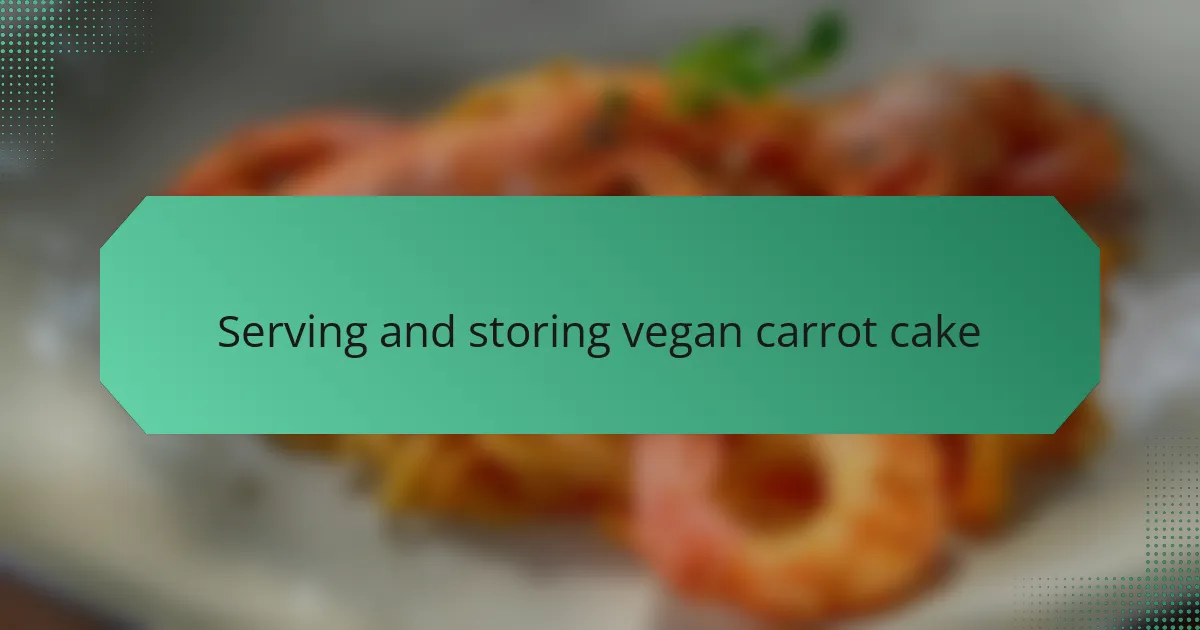
Serving and storing vegan carrot cake
When it comes to serving vegan carrot cake, I like to keep it simple—just a generous slice with a cup of herbal tea or a plant-based latte. Have you noticed how the spices seem to bloom even more when the cake is served slightly warm? That little warmth brings out the cozy, homemade feeling that makes every bite so satisfying.
Storing this cake is surprisingly easy. In my experience, wrapping it tightly in plastic wrap or placing it in an airtight container keeps it moist and fresh for up to three days at room temperature. If you ever find yourself with leftovers—as I often do—pop a slice in the fridge, though I recommend letting it come back to room temperature before enjoying to revive its tender texture.
For longer storage, freezing is a game changer. I usually cut the cake into portions, wrap each piece well, and freeze them individually. When I’m ready for a treat, I let the slice thaw overnight in the fridge and then bring it to room temperature. Have you tried freezing cakes before? It’s such a convenient way to enjoy fresh vegan carrot cake anytime without worrying about it going stale.